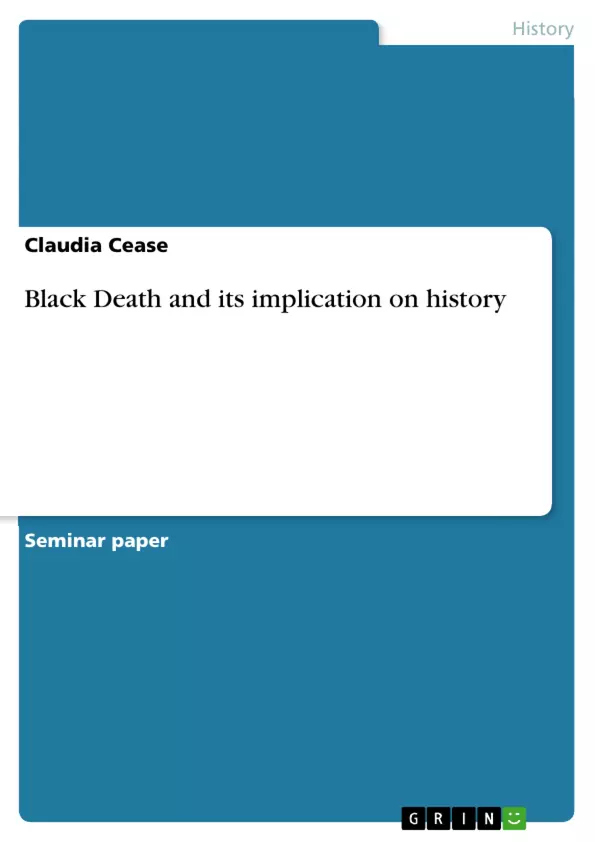The medieval times are synonymous with knighthood, castles, and the plague. The Black Death as it became known wiped out whole townships and landscapes. The figures of those who became victim to the sickness vary and are highly localized. Some towns lost 80% to 90% of their population, while others mourned over 30%, some towns and cities remained untouched by the disease while others literary died out or were completely abandoned. Generally, the statistics name one third to a half of Europe’s population as the death toll . Today, few realize that the cause of the mass exodus not only appeared before the Middle Ages, but also that it was a prevalent disease in Europe and Asia. The common understanding is that the pestilence first arrived in 1348 in Messina, Sicily on a ship which came originally from an Asian harbor using the established trading routes . The dead and infected sailors then passed on the sickness through contact with the susceptible inhabitants, and rats leaving the ship spread the disease further by hosting the carrier of the virus, the flea.
Inhaltsverzeichnis (Table of Contents)
- The Black Death and its Implication on our History
- The 'Plague' remains an elusive disease.
- The Black Death has been described by eyewitnesses.
- The impact on the individual was many-fold and diverse as there were people.
Zielsetzung und Themenschwerpunkte (Objectives and Key Themes)
This text explores the Black Death, its historical significance, and its impact on European society. It aims to provide a comprehensive overview of the disease, its origins, spread, and the social, political, and cultural consequences that ensued.
- The Black Death's origins and spread
- The social and cultural consequences of the Black Death
- The medical understanding of the Black Death in the 14th century
- The role of fear and superstition in the Black Death's impact
- The enduring legacy of the Black Death
Zusammenfassung der Kapitel (Chapter Summaries)
This section summarizes the main themes of each chapter, excluding the conclusion and any sections containing major revelations or spoilers.
- Chapter 1: This chapter introduces the Black Death, its historical context, and its devastating impact on European populations. It discusses the varying death tolls across different regions and the disease's prevalence in Europe and Asia.
- Chapter 2: This chapter delves into the scientific discovery of the pathogen responsible for the Black Death, Yersinia pestis, and the research of Dr. Simond, who identified rats and fleas as carriers of the disease.
- Chapter 3: This chapter explores the symptoms and course of the Black Death, drawing on eyewitness accounts and medical transcriptions. It examines the fear and horror that characterized the epidemic, and the breakdown of social order.
- Chapter 4: This chapter focuses on the social and cultural ramifications of the Black Death, including the rise of crime, promiscuity, and the emergence of religious and social movements. It explores the prejudice against Jewish communities during the epidemic.
Schlüsselwörter (Keywords)
The primary keywords and focus topics of this text are the Black Death, Yersinia pestis, bubonic plague, medieval Europe, social consequences, cultural impact, eyewitness accounts, fear, superstition, and medical knowledge. The text explores the historical context of the Black Death, the scientific understanding of the disease, and its lasting effects on society.
- Citation du texte
- Claudia Cease (Auteur), 2012, Black Death and its implication on history, Munich, GRIN Verlag, https://www.grin.com/document/263604



